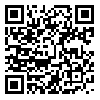Introduction: Deviant behaviors at workplace, affect the individual performance and organizational outcomes by violation of rules and organizational regulations. The present study investigates the mediating role of work engagement in the relationship between emotional exhaustion and deviant behaviors at work place.
Methods: This study is an applied research in terms of purpose and a descriptive-correlation research in terms of method. The statistical population is the faculty members of ........................... University. A sample comprising of 120 members was selected using simple random sampling method. They responded the items of three questionnaires including the scales of work engagement (Schaufeli, Salanova, Gonzalez-Roma & Bakker, 2002), emotional exhaustion (Maslach and Jackson, 1981) and workplace deviant behaviors (Bennett and Robinson, 2000). Data analysis was done using structural equation modeling with Bootstrap method in software environment of AMOS .
Results: Emotional exhaustion is a negative predictor of work engagement (path coefficient= -0.59) and predicts workplace deviant behaviors indirectly and through the mediating role of work engagement (path coefficient= +0.28). Also, improving work engagement results in reducing deviant behaviors at workplace (path coefficient= -0.42).
Conclusion: Emotional exhaustion has influence on deviant behaviors through the mediating role of work engagement. So, taking some considerations into account, controlling or reducing emotional exhaustion of faculty members, can improve their work engagement and reduce deviant behaviors at workplace.
Keywords: Deviant Behaviors, Work Engagement, Emotional ExhaustionAbstract
Received: 2017/01/30 | Accepted: 2017/05/20 | Published: 2018/02/18
| Rights and permissions | |
 |
This work is licensed under a Creative Commons Attribution-NonCommercial 4.0 International License. |


